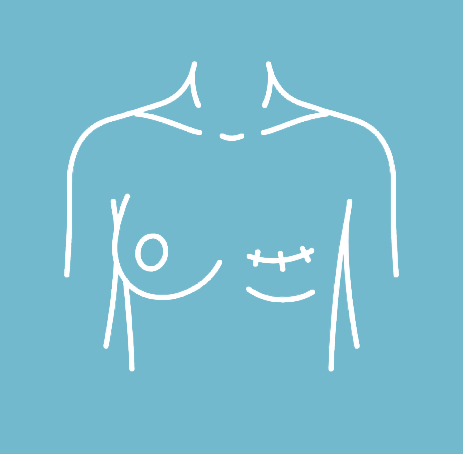





Often when patient had a breast cancer and underwent mastectomy because cancer was advanced or multicentric or patient wishes, it left patient with emotional and sometimes physical distress. Here comes the role of plastic surgeon to reconstruct the breast as natural as possible.
Who is the candidate for breast reconstruction?
Most patients who had mastectomy are candidate for one form of breast reconstruction. No age restriction and there are multiple options to fit each case. I take multidisciplinary approach to choose the right option for each patient. Many factors affect the decision such as cancer type, finishing cancer treatment, having radiotherapy treatment, presence of support at home and patient’s wishes.
When can I have breast reconstruction?
There is two points in your cancer treatment journey I can offer you the treatment. First is immediate breast reconstruction which happens on the day of mastectomy by either: Implant with acellular dermal matrix, autologous local tissue transfer, autologous free tissue transfer. The second point is after you finish your cancer treatment which also could be done by tissue expander then breast implant, autologous tissue transfer combined with implant and autologous free tissue transfer.
What is the beast way to do breast reconstruction?
Each way has its pros and cons. However, best way is what suits your needs more with the highest outcome the least morbidity. I discuss all the options in the consultation to enable the patient to take an informed decision for the best outcome possible.
What happens during breast reconstruction procedure with a breast implants?
In general implant-based reconstruction is done using implants either on the day of mastectomy. While it is the most straightforward way, it dies not give natural look breasts. Besides, it does not go well with radiotherapy treatment that usually giving after mastectomy. Likewise, using autologous local tissue imply significant morbidity to the back or the abdominal wall. Hence, using your own tissue as a free tissue not only give you the best aesthetic results bit also has the least morbidity possible.
What happens during breast reconstruction procedure with a free tissue transfer?
I perform autologous tissue free transfer under general anaesthesia starting with harvesting the lower abdominal tissue with its blood vessels using meticulous surgical dissection without distrusting the abdomen musculature. Then reshape that tissue to create a breast like structure which will be implanted in the chest after connecting the blood vessel to chest vessel using surgical microscope. The surgery takes around 6 hours and you will stay in hospital for 3-4 nights.
Will it be painful afterwards and how long do I have to have off work?
Swelling, bruising and some pain are usual for the first 2-3 days afterwards and gradually improve over the next 10 days. You will need four to eight weeks off work. I would recommend an abdominal support garment and post surgery bra for support.
What are the risks of the operation?
Any operation carries some risks. Bruising, swelling and numbness of breast skin and donor area are common. Infection, bad scarring, problems with the reconstruction, asymmetry, bleeding, seroma are uncommon. In some cases, there is a problem after the surgery and you will need to back to the operating theatre to try and correct any issues. In general, the success rate of the surgery in 98% based in the UK national flap registry.
When will I have appointments after the operation?
Review at any time if you have any concerns. Routinely at 1 and 2 weeks and 3 months after surgery to assess final result. Scars continue to settle for 18-24 months.
How would we reconstruct the nipple?
After a successful breast reconstruction by 6 months

Consultant in Plastic Surgery, specializing in Breast Reconstruction and microsurgical Procedures.